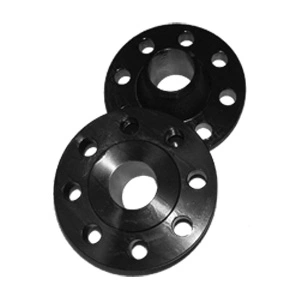Process and Quality of Welded Flanges

A flange is used for attachment to another object, for instance, the end of a pipe. It can also be used for connection between two equipments, e.g. reducer flange, which is used for connection between the motor and the reducer, as well as the reducer and other equipment.
According to the connection mode, flanges can be divided into welding plate flanges, hubbed slip-on-welding flanges, weld neck flanges, socket weld flanges, threaded flanges, blind flanges, loose flanges with welding-on collar, large diameter plate flanges, large diameter weld neck flanges, spectacle blinds, welding neck collar loose flanges, etc.
Some preparatory measures are needed when welding flanges. The required equipment includes a set of manual welding machine, an angle grinder with a side handle, an electric air hammer and a flat ruler. Before the flange is welded, it is necessary to check and debug equipment to ensure its normal operation, and dry the prepared welding rod at 300℃-350℃ for one hour as far as possible.

Then start to weld flanges. First, assemble the cone and the big flange according to the drawing, and then divide the big flange into 8 equal parts. Because the flange is thick and the groove is large, symmetrical section and multi-layer welding are adopted. Finally, it is required that the weld strength should at least reach the parent metal strength. The weld surface is flat and smooth, and there are no defects such as burn-through, porosity, weld leakages, slag, undercut and incompletely filled grooves. Weld reinforcement is less than 2mm.
As far as welded flanges are concerned, many customers question whether the quality of welding plate flanges is superior to forged welding flanges. In fact, the quality of the former is the same as that of the latter, but the quality of the material of welding plate flanges is not guaranteed. Generally, there is no problem with the density of welding plate flanges, but in the process of production, the blank of welding plate flanges is rarely tested, so the material quality is not guaranteed.
Related News
- Installation of Main Bolts for Lap Joint Flange in High-Temperature Gas-Cooled Reactors
- Structural Design and Finite Element Analysis of Anchor Flanges
- Key Welding Technology for High-Neck Flange and Steel Pipe Joints
- The Design and Calculation of Stamped Lap Joint Flanges
- Development of Manufacturing Large Anchor Flanges
- Hardfacing the Inner Surface of Long-Neck Flanges Using CO₂ Gas-Shielded Welding
- UHV High-Neck Flange Welding
- Application of High-Neck Flange to UHV Steel Pipe Tower
- Analysis of the Cracking Cause of High-Neck Flanges
- Anchor Flanges for the East-West Gas Transmission Project
